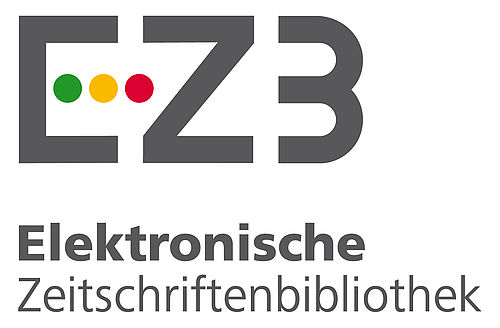Abstract
Project Number
European Community Project, No. ITMS 26220220013
References
- References 1. Adams, R.P., 2007. Identification of Essential Oil Components by Gas Chromatography/Mass Spectrometry. 4th ed. , Allured Pub Corp: New York, NY, USA, 823 p., ISBN: 978-1932633214
- 2. European Pharmacopoeia (Ph. Eur.), 2018, 9th ed. Strasbourg, Council of the Europe Union, 5825 p.
- 3. Humphrey, A.M., 1992. Observation on esential oil distillation in the laboratory. In: The 23rd International Symposium on Essential Oils, Ayr, Scotland, UK, pp. IV-2
- 4. Isaac, O., 1979. Pharmacological investigation with compounds of chamomile * I. On the pharmacology /-/-α-bisabolol and bisabololoxides (Review). Planta Medica, Vol. 35, pp. 118-124
- 5. Jasičová, M., Felklová, M., 1976. Vliv oblasti púvodu na kvalitu úboru Matricaria chamomilla L. (in Slovak). Farmaceutický obzor. Vol. XLV, s. 317-322
- 6. Lawrence, B.M. and Reynolds, A.C., 1987. Progress in essential oils. Perfumer & Flavorist, Vol. 12, pp. 35-55
- 7. Mann, C. and Staba E. J., 1986: The Chemistry, Pharmacology and Commercial Formulation of Chamomile. In: L. E. Craker and J. E. Simon (eds.) Herbs, Spices, and Medicinal Plants: Recent Advances in Botany, Horticulture, and Pharmacology. Vol.1, Phoenix, AZ: Oryx Press. pp. 235-280
- 8. Mycak, V., 1953. Pestovanie liečivých, aromatických a koreninových rastlín (in Slovak). 1. Vyd., Štátne pôdohospodárske nakladateľstvo: n.p. Praha, závod Bratislava, PIO 105100/52-III/1., 249 p.
- 9. Oravec, V., Sr., Oravec, V., Jr. 2007. Breeding of bisabolol diploid and tetraploid varieties of chamomile in Slovakia. Acta Horticulturae, 2007, No. 749, pp. 115-121
- 10. Palaniswamy, U.R. – Palaniswany, K.M.: 2006. Handbook of Statistics for Teaching and Research in Plant and Crop Science. 1st ed. , Food Products Press and The Haworth Reference Press, New York, London, Oxford. 624 p. ISBN: 978-1-56022-293-4
- 11. Read, Ch., 1992. Essential Oils. Focus on Herbs. Vol. 9, p. 2-8
- 12. Rod, J., 1982. Šlechtění rostlin (in Czech). 4. vyd., Státní zemnědelské nakladatelství : Praha. 368 s., 07-062-02
- 13. Salamon, I. and Honcariv, R., 1994. Growing Condition and Breeding of Chamomile (Chamomilla recutita (L.)Rauschert) Regarding the Essential Oil Qualitative-Quantitative Characteristics in Slovakia. Herba Polonica, Vol. XL, Iss. 1, pp. 69-74
- 14. Schilcher, H., 2004. Wirkungweise und Anwendungsformen der Kamillenblűten – Handbuch fűr Apotheker, Ärzte, Heilpraktiker und weitere Heilberufe sowie fűr Medizin-, Pharmazie- und Biologiestudenten (in German). BMV Berliner Medizinische Verlagsanstalt GmbH, 160 s., ISBN: 3880400067.
Abstract
Chamomile, Matricaria recutita L., is one of the most
important medicinal plants cultivated in the Central Europe. Primarily the dry
flower anthodia, Chamomillae Flos, in
its entirety has anti-inflammatory, antiseptic, healing, simulative,
carminative, spasmolytic and sedative activity. Slovakia belongs to these
European countries in which particular attention has been devoted to the
research and development of chamomile in all its aspects including the breeding
of this special crop. Prof. Dr. Robert
Honcariv was the pioneer of medicinal plant breeding in Slovakia, and made the
first selections in chamomile at the P. J. Safarik University in Kosice. The
first variety 'BONA' was registered in the National Book Variety
in 1984. The first tetraploid variety 'LUTEA'
was accepted by the Slovak Central Control and Testing Institute in Agriculture
in 1995. Both these varieties were from the old century. Their qualitative and
quantitative parameters are very commonly inconvenient. On the present, the
chamomile variety 'LIANKA' was bred
at the University of Presov, Slovakia, between the years 2008 – 2013.
Currently, this variety obtains the Certificate by the Community Plant Variety
Office (CPVO) in Angers, France in 2018.
The GC/MS results confirm earlier reports that major volatile constituents
obtained from the flower inflorescences are /-/-α-bisabolol (67.35 ± 2.82
%) and chamazulene (10.05 ± 1.04 %) and the low contents of /-/-α bisabolol
oxides A and B (2.95 ± 0.32 %).
Supporting Institution
University of Presov, Presov, Slovakia
Project Number
European Community Project, No. ITMS 26220220013
Thanks
The breeding works were supported by the European Community project, ITMS No. 26220220013 with the title “Using research and development for the breeding of new cultivars (prototype) of medicinal plants and their varietal registration”.
References
- References 1. Adams, R.P., 2007. Identification of Essential Oil Components by Gas Chromatography/Mass Spectrometry. 4th ed. , Allured Pub Corp: New York, NY, USA, 823 p., ISBN: 978-1932633214
- 2. European Pharmacopoeia (Ph. Eur.), 2018, 9th ed. Strasbourg, Council of the Europe Union, 5825 p.
- 3. Humphrey, A.M., 1992. Observation on esential oil distillation in the laboratory. In: The 23rd International Symposium on Essential Oils, Ayr, Scotland, UK, pp. IV-2
- 4. Isaac, O., 1979. Pharmacological investigation with compounds of chamomile * I. On the pharmacology /-/-α-bisabolol and bisabololoxides (Review). Planta Medica, Vol. 35, pp. 118-124
- 5. Jasičová, M., Felklová, M., 1976. Vliv oblasti púvodu na kvalitu úboru Matricaria chamomilla L. (in Slovak). Farmaceutický obzor. Vol. XLV, s. 317-322
- 6. Lawrence, B.M. and Reynolds, A.C., 1987. Progress in essential oils. Perfumer & Flavorist, Vol. 12, pp. 35-55
- 7. Mann, C. and Staba E. J., 1986: The Chemistry, Pharmacology and Commercial Formulation of Chamomile. In: L. E. Craker and J. E. Simon (eds.) Herbs, Spices, and Medicinal Plants: Recent Advances in Botany, Horticulture, and Pharmacology. Vol.1, Phoenix, AZ: Oryx Press. pp. 235-280
- 8. Mycak, V., 1953. Pestovanie liečivých, aromatických a koreninových rastlín (in Slovak). 1. Vyd., Štátne pôdohospodárske nakladateľstvo: n.p. Praha, závod Bratislava, PIO 105100/52-III/1., 249 p.
- 9. Oravec, V., Sr., Oravec, V., Jr. 2007. Breeding of bisabolol diploid and tetraploid varieties of chamomile in Slovakia. Acta Horticulturae, 2007, No. 749, pp. 115-121
- 10. Palaniswamy, U.R. – Palaniswany, K.M.: 2006. Handbook of Statistics for Teaching and Research in Plant and Crop Science. 1st ed. , Food Products Press and The Haworth Reference Press, New York, London, Oxford. 624 p. ISBN: 978-1-56022-293-4
- 11. Read, Ch., 1992. Essential Oils. Focus on Herbs. Vol. 9, p. 2-8
- 12. Rod, J., 1982. Šlechtění rostlin (in Czech). 4. vyd., Státní zemnědelské nakladatelství : Praha. 368 s., 07-062-02
- 13. Salamon, I. and Honcariv, R., 1994. Growing Condition and Breeding of Chamomile (Chamomilla recutita (L.)Rauschert) Regarding the Essential Oil Qualitative-Quantitative Characteristics in Slovakia. Herba Polonica, Vol. XL, Iss. 1, pp. 69-74
- 14. Schilcher, H., 2004. Wirkungweise und Anwendungsformen der Kamillenblűten – Handbuch fűr Apotheker, Ärzte, Heilpraktiker und weitere Heilberufe sowie fűr Medizin-, Pharmazie- und Biologiestudenten (in German). BMV Berliner Medizinische Verlagsanstalt GmbH, 160 s., ISBN: 3880400067.
Details
| Primary Language | English |
|---|---|
| Subjects | Pharmacology and Pharmaceutical Sciences |
| Journal Section | Research Article |
| Authors | |
| Project Number | European Community Project, No. ITMS 26220220013 |
| Publication Date | December 26, 2019 |
| Published in Issue | Year 2019 Volume: 2 Issue: 2 |
Cited By
Can Medicinal Plants Help in the Treatment of the New Coronavirus? Some R & D Aspects in Slovak Republic
Current Perspectives on Medicinal and Aromatic Plants (CUPMAP)
https://doi.org/10.38093/cupmap.950755
-------------------------------------------------------------------------------------------------------------------------------













-------------------------------------------------------------------------------------------------------------------------
 CUPMAP Journal is licensed under a Creative Commons Attribution-NonCommercial-NoDerivatives 4.0 International License.
CUPMAP Journal is licensed under a Creative Commons Attribution-NonCommercial-NoDerivatives 4.0 International License.
-----------------------------------------------------------------------------------------------------------------------------------------
This is an open access journal which means that all content is freely available without charge to the user or his/her institution. Users are allowed to read, download, copy, distribute, print, search, or link to the full texts of the articles, or use them for any other lawful purpose, without asking prior permission from the publisher or the author. This is in accordance with the BOAI definition of open access.
